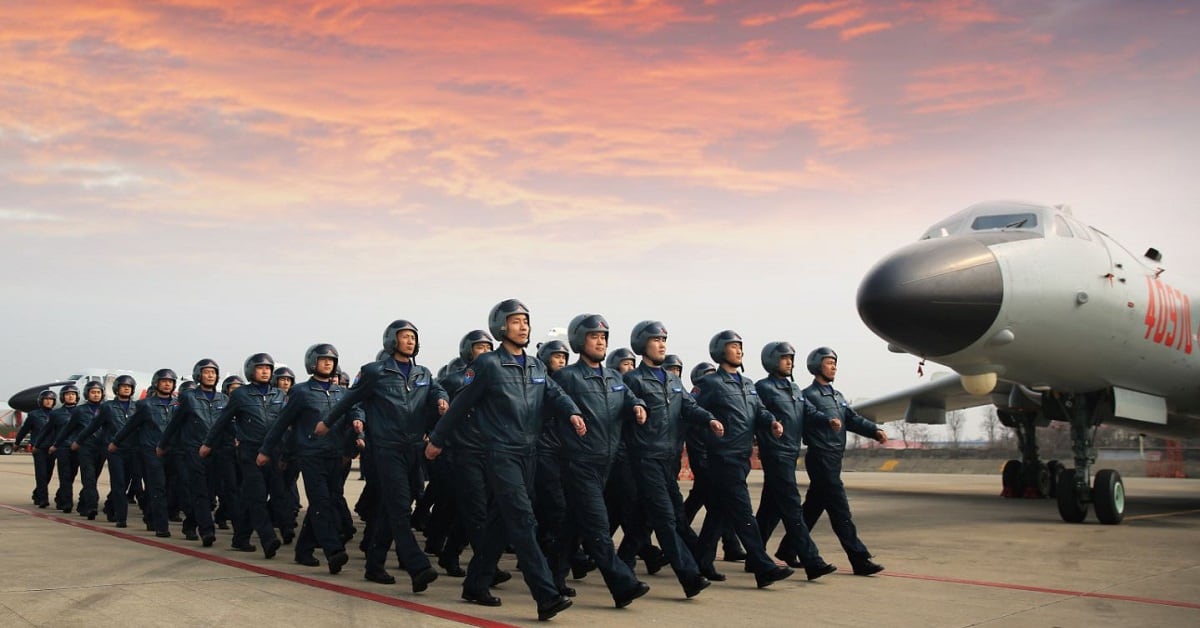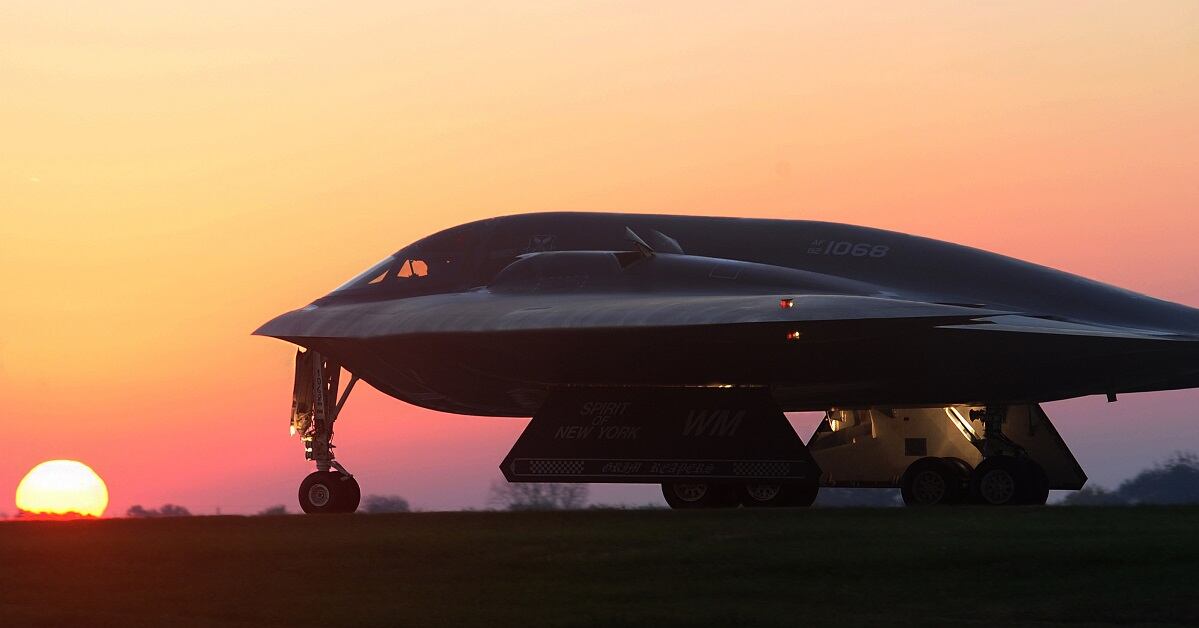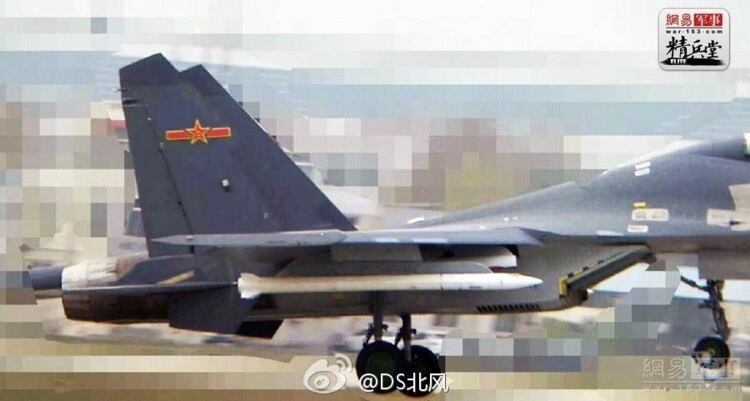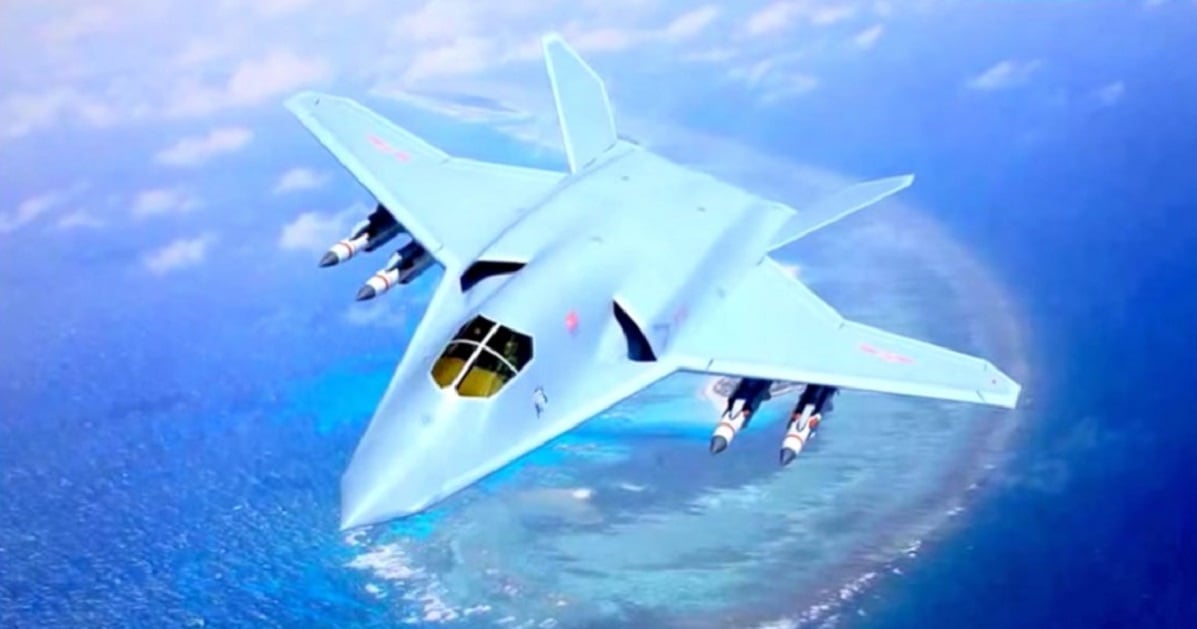China made history as the only nation other than the U.S. to ever field a stealth fighter jet, and a new report on China’s military power from the Defense Intelligence Agency just revealed yet another batch of stealth combat aircraft projects.
China "is developing new medium- and long-range stealth bombers to strike regional and global targets," the report reads. "Stealth technology continues to play a key role in the development of these new bombers, which probably will reach initial operational capability no sooner than 2025."
Today, China holds perhaps the world’s most passive nuclear arsenal, with nuclear warheads that never arm missiles and nominally “nuclear-capable” bombers that have never flown missions with nuclear warheads on board.
China’s only current bomber is the H-6K, an updated, licensed knock off of the Soviet Tupolev Tu-16, which entered into service in 1954 and was retired by Moscow in 1993.
RELATED

While the H-6K serves the purpose of signaling capability and resolve — by landing on artificial islands in the South China Sea, for example — it’s nowhere near a modern bomber.
Plans and some potential images have leaked for the H-20, a long-range replacement for the H-6K, but until now the second Chinese stealth bomber has remained a rumor and a mystery.

Fighter/bomber?
Experts say the H-20 will likely look a lot like the U.S. Air Force’s B-2, a big, flat, flying wing type design.
But the DIA hinted at something a bit more sporty in its report for the second mystery bomber.
"These new bombers will have additional capabilities, with full-spectrum upgrades compared with current operational bomber fleets, and will employ many fifth-generation fighter technologies in their design," the report said.
While a long-range flying wing type bomber like the H-20 has little use for fighter maneuvers, a medium-range fighter/bomber aircraft could easily make use of the avionics and tactics China gained in developing its stealth fighter, the J-20.
The DIA refers to the second bomber, with a fighter-bomber mission, as a “tactical bomber” with an advanced radar and long-range air-to-air missiles.
The Drive points out that a bomber like the one described by the DIA would have increased endurance and wouldn't rely so heavily on refueling tankers, thought to be a weak link with U.S. combat aircraft.

Secret weapon?
China has long been developing a massive, 19-foot-long, very long range air-to-air missile that experts say could pose a direct challenge to top U.S. fighters like the F-35, F-22 and all legacy aircraft.
But the J-20 likely can’t carry this long missile. A stealthy platform with a large internal weapons bay, like the fighter/bomber describe by the DIA could, in theory, handle this weapon.
With both an air-to-air and an air-to-ground mission, the mysterious new bomber may represent a missing link in China’s emerging vision of air supremacy against the U.S.
Every big-deck U.S. aircraft carrier launches early warning radar aircraft to act as long-range sensors for its fighter fleets, and this new missile appears purpose-built to down them.
“The best solution to this problem I can figure out is to send a super-maneuverable fighter jet with very long-range missiles to destroy those high-value targets, which are the ‘eyes' of enemy jets,” air force researcher Fu Qianshao told Chinese media.
Super-maneuverability is one of the fifth-generation fighter characteristics that China may employ in its new bomber, according to the DIA.
"So the successful development of this potential new missile would be a major breakthrough," said Fu.
China has long hyped its existing J-20 as an air superiority fighter, but that assessment is routinely shot down by Western analysts who say the plane doesn’t stand a chance in close combat with U.S. F-15s or European Typhoons.
For the U.S., which can bring to bear the tremendous power of large fleets of land and ship-launched fighter jets anywhere in the world, its main weakness in air combat remains short ranges on its new jets, which leads to a reliance on unarmed refuelers.
But China, by following through on a medium range fighter bomber with long range missiles, may have cracked the code of how to dominate the skies of the Pacific while the U.S. pours money into short range fighters like the F-35 or long-range bombers like the B-21.
More from Business Insider
♦ China’s J-20 stealth fighter has no cannon — and it shows the jet can’t dogfight with the US
♦ China’s mysterious H-20 bomber has a nuclear mission, but that’s got nothing on its real threat
♦ A Chinese fighter pilot warned a foreign aircraft in Beijing’s air defense identification zone





